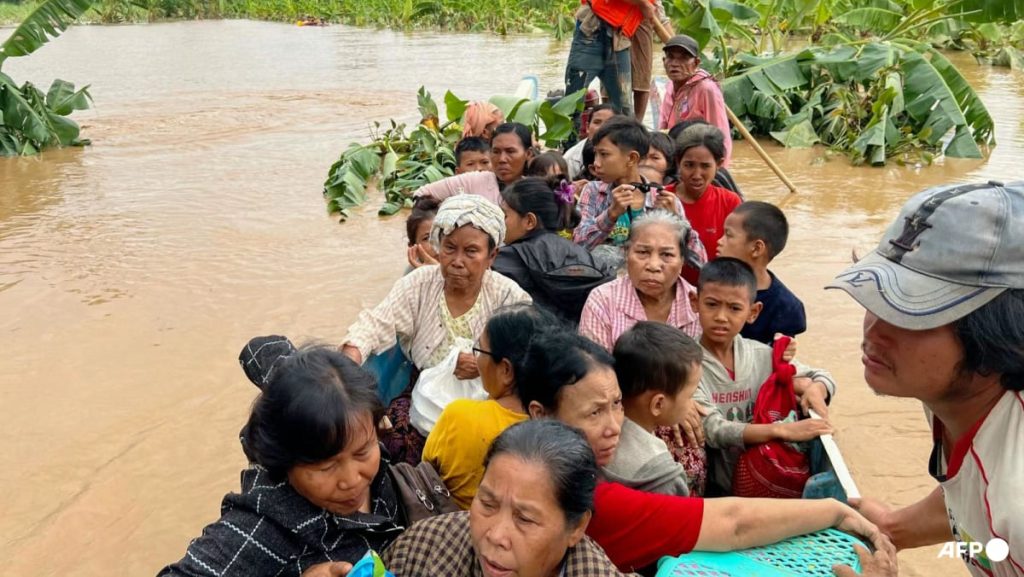Severe flooding in Myanmar following Typhoon Yagi has left hundreds of villagers in the remote capital Naypyidaw wading or swimming through deep waters in order to escape. The deluge caused by the typhoon has also affected northern Vietnam, Laos, and Thailand, leading to landslides and widespread devastation. The death toll across the four countries currently stands at 280, with many more people missing and feared dead.
In Myanmar, the national fire service confirmed a death toll of 36 with more than 50,000 people displaced from their homes. Residents described wading through neck-high waters, expressing hunger and thirst as well as fear stemming from the unprecedented flooding. Soldiers have been working to rescue residents of flooded villages, navigating the complex river and creek networks surrounding Naypyidaw. Houses, banana plantations, and sugarcane fields have been completely submerged, indicating the scale of the disaster.
State media reports detail the destruction caused by the floods, including landslides, collapsed electricity towers, and damaged infrastructure. In the Mandalay region, villagers were forced to ride elephants in order to reach higher ground, showcasing the desperation of the situation. Many have expressed shock at the intensity of the flooding, with one man describing it as a very scary experience due to the lack of time to prepare for the disaster.
The situation in Myanmar is mirrored in other parts of the region affected by Typhoon Yagi, with Vietnam bearing the brunt of the devastation with 233 reported deaths. Laos, Thailand, and Myanmar have also witnessed significant loss of life and destruction of property. The collaborative efforts of government agencies, military personnel, and local communities are crucial in the ongoing rescue and relief operations to mitigate further loss of life and provide assistance to those displaced by the floods.
As the death toll continues to rise and more people are reported missing, the need for international aid and support becomes increasingly urgent. The long-term implications of the floods, including the impact on livelihoods, infrastructure, and agriculture, are likely to be substantial. Rebuilding efforts will require sustained resources and commitment from governments, NGOs, and other stakeholders to ensure that affected communities can recover and rebuild in a sustainable and resilient manner.
With the immediate focus on rescue operations and providing emergency relief to those affected by the floods, attention must also be given to addressing the underlying factors contributing to the severity of the disaster. Climate change, poor urban planning, and deforestation are all factors that can exacerbate the impact of natural disasters such as typhoons and floods. It is essential for governments and communities to work together to implement measures that increase preparedness, resilience, and adaptive capacity in the face of future extreme weather events.













